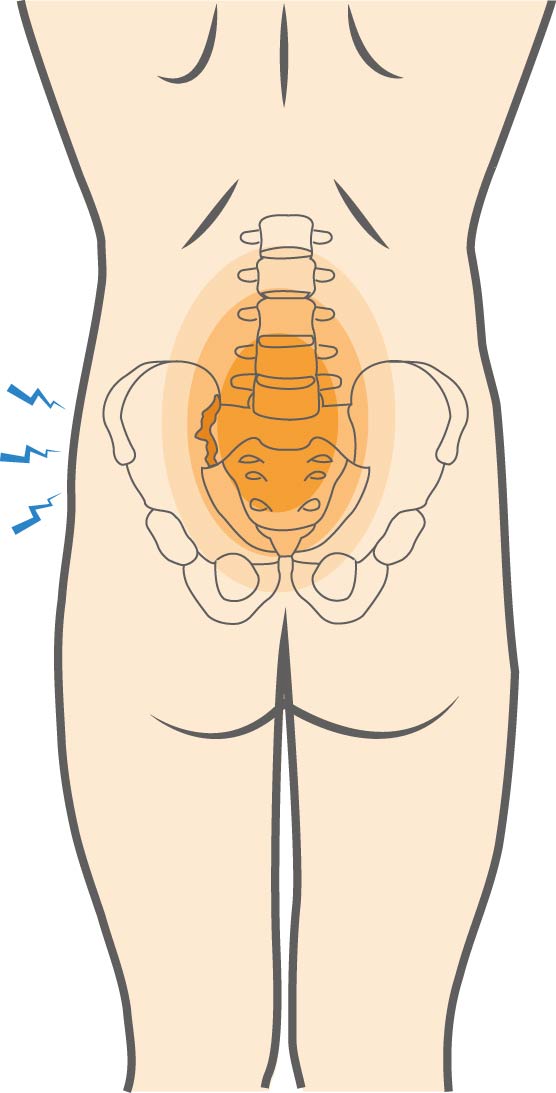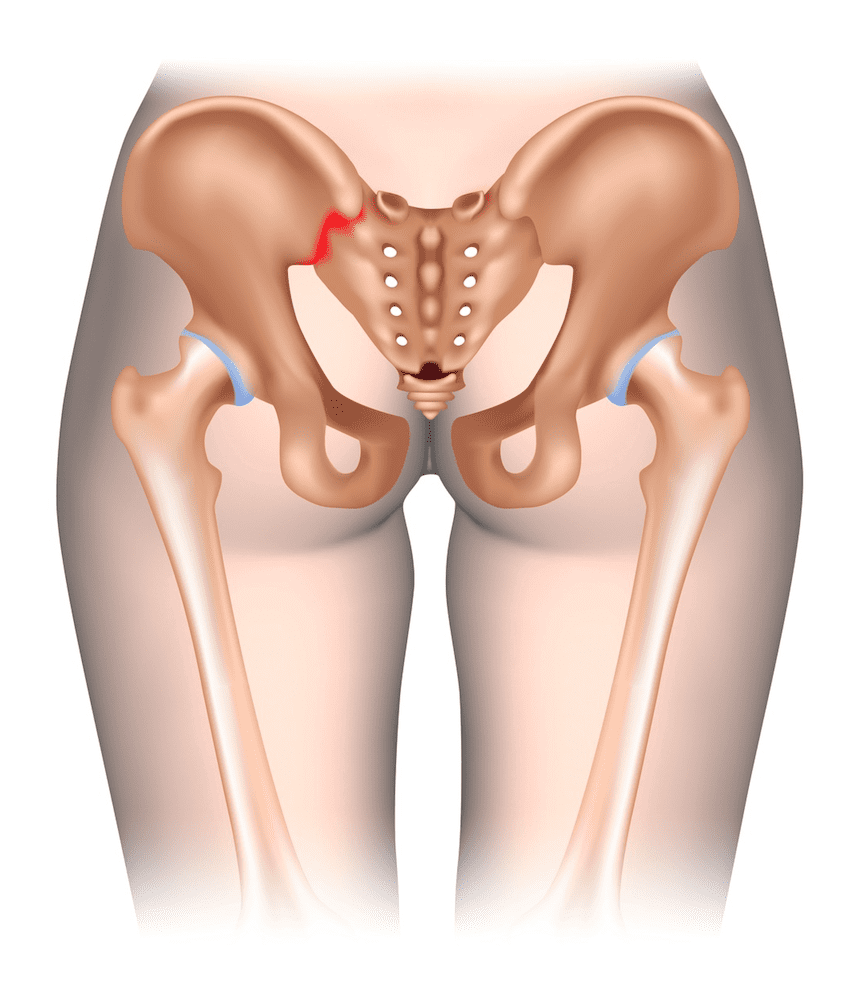The sacroiliac joints, sometimes called the SI joints, are where the two iliac bones of the pelvis join with the sacrum, a triangular bone at the base of the spine. The SI joints help to support your body’s weight and allow you to twist at the hips. These bones are held together by several very strong ligaments, the tough, fibrous tissue that connects bones. These ligaments can become stretched or torn by repetitive motion seen in many sports.
Sacroiliac (SI) Joint Sprain Causes, Symptoms & Treatment
The sacroiliac joints, sometimes called the SI joints, are where the two iliac bones of the pelvis join with the sacrum, a triangular bone at the base of the spine. The SI joints help to support your body’s weight and allow you to twist at the hips. These bones are held together by several very strong ligaments, the tough, fibrous tissue that connects bones. These ligaments can become stretched or torn by repetitive motion seen in many sports. Athletes with an SI joint sprain typically experience pain in their lower back or upper buttocks
Overview
Overview

What causes Sacroiliac (SI) Joint Sprain?
 A sacroiliac joint sprain may be caused by a direct trauma to the pelvis, due to a fall or collision on the playing field, or it can occur due to overuse from repetitive twisting motions that are frequently seen in sports. Sometimes there is no clear cause for this condition.
A sacroiliac joint sprain may be caused by a direct trauma to the pelvis, due to a fall or collision on the playing field, or it can occur due to overuse from repetitive twisting motions that are frequently seen in sports. Sometimes there is no clear cause for this condition.
SI joint sprain is most common in these sports:
- Hockey
- Football
- Ice Skating
- Gymnastics
- Tennis
Symptoms
Athletes with an SI joint sprain typically experience pain in their lower back or upper buttocks. Other common symptoms include:
- Pain that radiates into the upper thigh and the groin
- A feeling of instability at the hip
- Pain that is worse when standing or walking
- Pain that gets better when lying down
When to see a doctor
Athletes with symptoms of an SI joint sprain should see their doctor if their symptoms persist. A diagnosis of SI joint sprain is based primarily on a physical examination. By asking you to place your hips and legs in certain positions, your doctor can perform tests to pinpoint the source of discomfort and provide the right sacroiliac joint pain relief. Occasionally, x-rays and other imaging tests will be ordered to confirm a diagnosis or identify other problems that may be causing you pain.
Non-operative treatment
Treatment of SI joint sprains initially focuses on rest from activities that cause pain, such as running, lifting, or twisting. Other treatments also include:
- Applying a cold compress to painful areas can help you get sacroiliac joint pain relief
- Taking nonsteroidal anti-inflammatory drugs (NSAIDs), such as ibuprofen and naproxen, to relieve pain
- Corticosteroid injections into the SI joints, guided by an x-ray, to relieve pain
- Stretching and stabilizing exercises to reduce pain and develop strength and flexibility
Try these exercises to help address your condition:
Below is a PDF of the Exercise Program
Recovery
With rest and treatment, athletes with an SI joint sprain can expect to see symptoms subside within a few weeks. Your doctor will help guide you to a full recovery.
GET BACK TO WHAT YOU LOVE. FASTER
Sources
https://www.medicinenet.com/sacroiliac_joint_pain/article.htm#what_are_the_sacroiliac_si_joints
http://www.sportsinjuryclinic.net/sport-injuries/low-back-pain/sacroiliac-joint-pain
https://www.webmd.com/back-pain/si-joint-back-pain#1
https://www.spine-health.com/treatment/injections/sacroiliac-joint-injection

